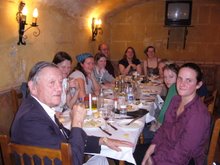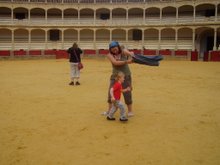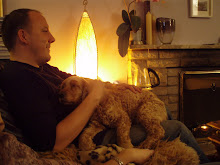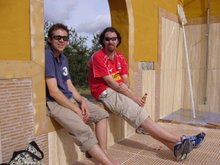Not much to report, but I'm feeling bored and not lazy - so instead of switching on the PS3 I've decided to blog instead. Joy for my readership.
I've been volunteering at the Blind Society for a while now, and a few weeks ago they decided to make me the new editor of the newsletter. This apropos of me showing up and saying I can write a bit ... so you can see what sort of standard they set for themselves! Anyway, this is my first edition and it's been a bit of an eye opener. I naively thought that, with blind people, there are enormous amounts of resources out there - and so there are. Up to a point. I mean, the technology is becoming more and more useful, but, truthfully, when it comes to everyday living technology only amounts to a small percentage of personal happiness. Especially when you consider the vast majority of blind people suffer from loss of vision due to age, and therefore technology is a bit alien to them anyway. When it comes to generally making people's lives more interesting and entertaining, there is, quite simply, jack shite. This is presumably because most people, like me, simply presume other people are doing the job we should be doing.
It's bad enough for older people, but when it comes to blind youngsters ... well, frankly, I'm pretty appalled. I've looked on website after website and there's really very little to feel optimistic about. True, a whole lot of stuff can be done regardless of whether you can see or not - but you'd think that places would have a little imagination. Take, for example, something as simple as the Scottish Crannog Centre. They have a Crannog. Don't get me started on how irritating it is to be an intelligent adult who just wants to go and have a look at said Crannog without being patronised by a Polish guy dressed as an Ice Age settler. Of course, the idea of letting adults wander around unsupervised is against health and safety. We might fall over the railings and into the water, and obviously immediately drown.
Frankly, if this happened then it would only be a case of nature weeding out the runts, and good riddance.
I digress. The Scottish Crannog is not really directly in my firing line over this, but they are a good enough example. They have tour guides dressed in Ice Age fancy dress, right? I mentioned this. So why not say "handicapped and visually impaired children welcome." The guides can describe what's in front of them. They could provide things for the kids to handle - even to smell - while they talk them through it. Baskets? Ice Age dishes of food? Fishing lines? Tools? I'm not Ice Age Crannog expert, but I'd think things like this would work. Now, it may well be that the Scottish Crannog centre provides all this and more - but nowhere on its website can I find reference to the disabled. Personally, I think that every public attraction should have its staff wander around with a blindfold on for a day and see how they could make what they do relevant to the visually impaired. There are around 37000 visually impaired people in Scotland, which is hardly a number to be sniffed at. It's the same as the population of Stirling. Plus, it seems that people who are visually impaired are quite likely to go into denial over it, considering only about 30% of those diagnosed as such actually register. Perhaps if there was more of a conscious effort to show that there are good things in life, even if you can't see, more people would register.
I just fell into working with the Blind Soc. I don't really do nearly enough - partly because it's a well run organisation with a very close-knit crew, and I actually seem to do more harm than good if I show up and 'intrude' on their social lives - but I do enough to see that the world is shit for them. There are splendid, heroic, wonderful people out there who look outside their own narrow little lives and try and make this planet a little more palateable for those who suffer from disability - but there aren't enough. Everyone should do it. And I don't mean everyone should volunteer for their local charities - I mean everyone should try and look at the world they inhabit while wearing another's shoes. Do you work in a place where the disabled should, and could, be made more at ease? Can you make it so just by doing something as simple as writing on your website that such people are welcome? Can you tell your staff to be aware of disabilites and amend their style to include them? Take a restaurant as an example: the waiter puts the food before you and gives you a bit of bumf about it. "Here we have a medallion of venison with a primrose jus and catsick mash" for example. Are you visually impaired? In that case, why can't the waiter say: "In the centre of the plate we have a rosy medallion of venison, sitting atop a small hillock of catsick mash and encircled by a thin line of primrose jus. Decorating the white plate is the ubiquitous yellow physallis, and a few primrose petals."
Not exactly hard. And these small courtesies can be extended all over the place with only the tiniest leap of imagination. But then again, in this technological, health-and-safety conscious world, what place has imagination? How many times have I heard words to the effect of "great idea, chuck, but ..."
I'm fed up with nay-sayers and those who see only problems before them. If you want to do something badly enough, there's almost always a way to do it. If there's a valley, build a fecking bridge. We'll cross it when we come to it.
Subscribe to:
Post Comments (Atom)



















0 comments:
Post a Comment